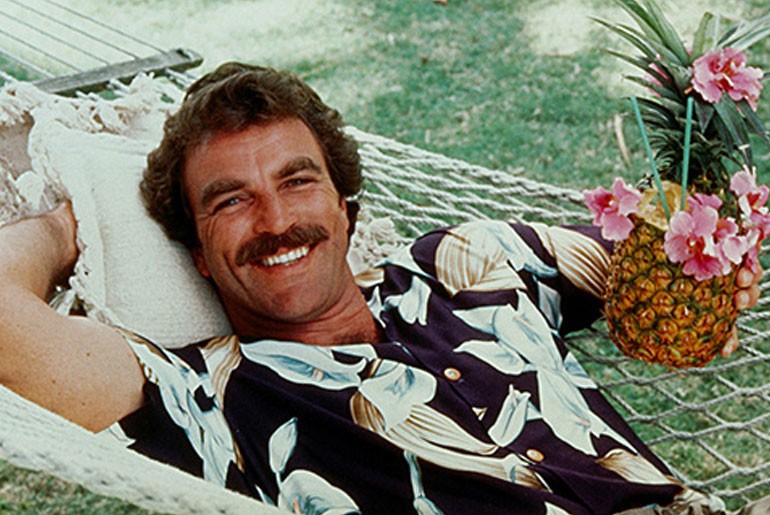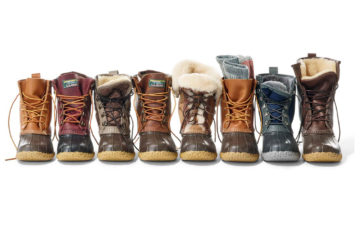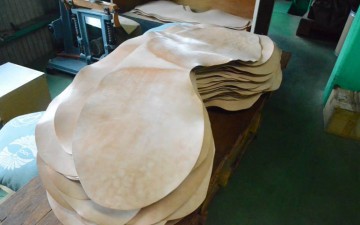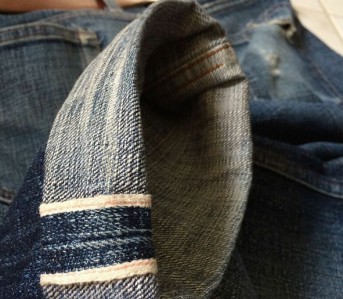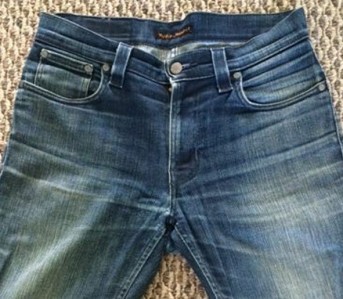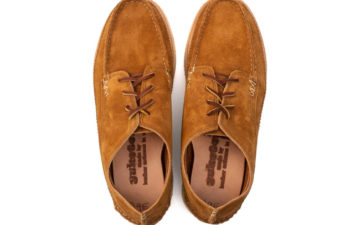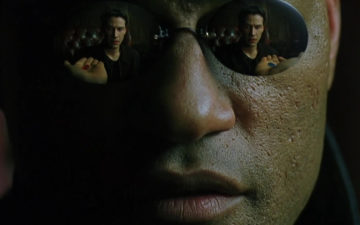Yeah, I am looking at you!
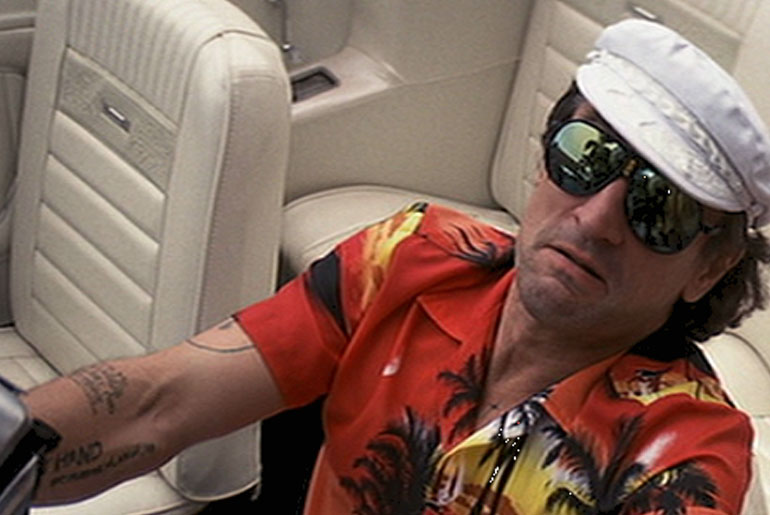
Considering it’s named for an exotic travel destination, it makes perfect sense that the Hawaiian Shirt come packed with plenty of it’s own baggage. Throughout the years it has been regarded as both ridiculous and sublime, counter culture and clowninsh couture…emblematic of the ultimate in cool and the “ugly” American.
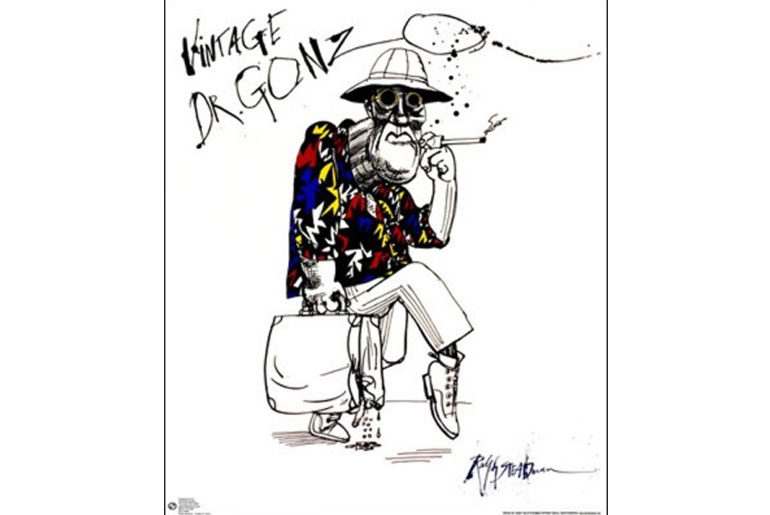
Ralph Steadman’s “Dr. Gonzo”
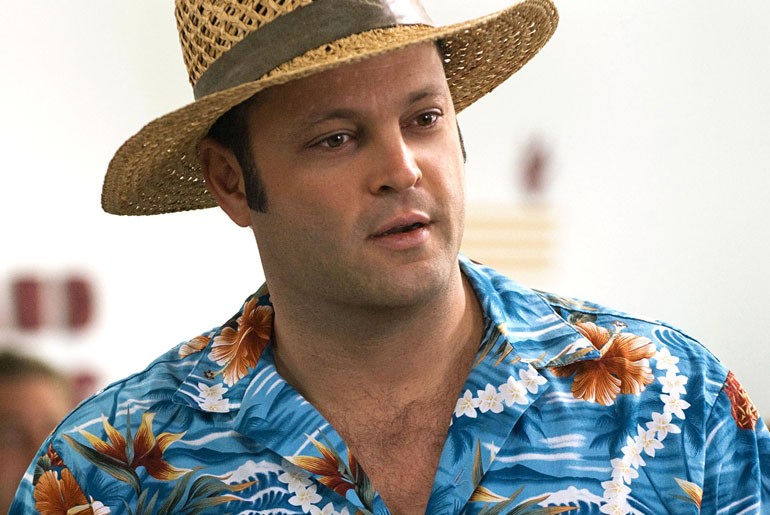
Vince Vaughn looking so not “money”
There was a time in the mid 1990’s when I not only collected Hawaiian shirts, but wore one just about every day. (Yeah, I was “that guy,” but if we’re here, aren’t we all kinda’ a version of “that guy?”).
In fact, I was working in late night television and was asked to curate list of Hawaiian shirt sources for the host. (I’d tell you what show and host, but I have a Top Ten list of reasons I feel discretion is the better part of valor.) So, like some of you with Japanese looms or vintage Red Wings or M-51 field jacket replicas, I know more about Hawaiian shirts that should be considered reasonable, and offer the following primer. Mahalo, and feel free to thank me later in Mai Tais.
Hawaiian Shirts Then
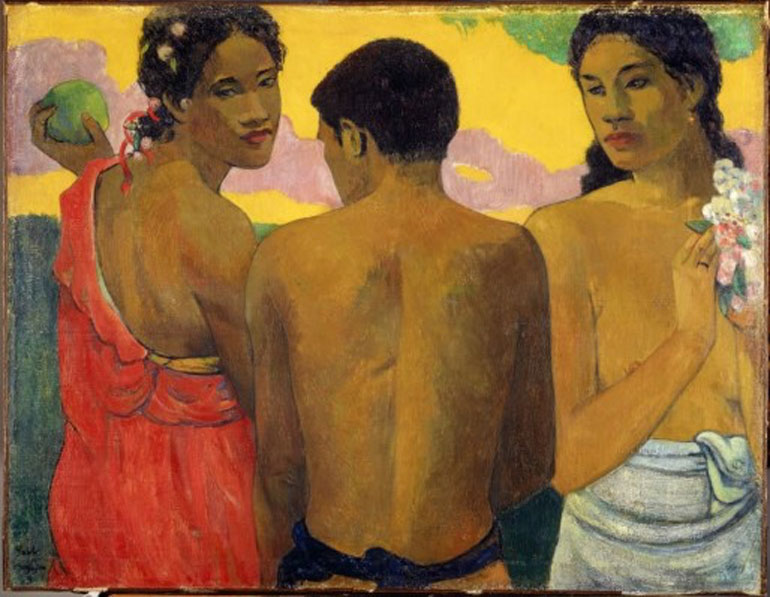
Paul Gauguin’s “Three Tahitians”
While nineteenth century missionaries to the islands preferred the natives wear any kind of shirt—Hawaiian or otherwise–the earliest days of what we now think of as the Hawaiian shirt weren’t until the 1920’s and 1930’s when immigrants to Hawaii started bringing their textiles and fashions along with them.
There was the bright Kimono cloth from Japan and silk from China, the Tahitian pareu (unisex wrap) and the Barong Tagalong (loose fitting, untucked shirt) from the Phillipines, and the classic colored shirt worn in the Lower 48. Of course, the Hawaiians were already known for their geometric block-patterned textiles they used to make their Kapa Malos and Kapa Pa’us (loin cloths and sarongs).
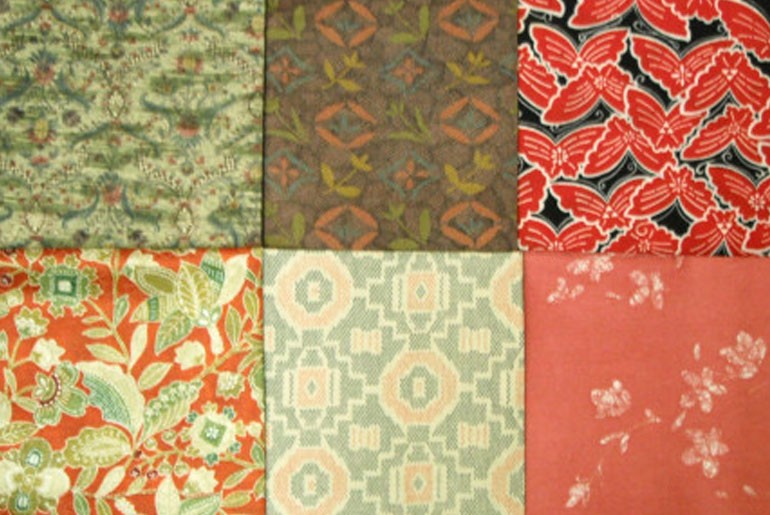
Vintage Silk Kimono Fabric
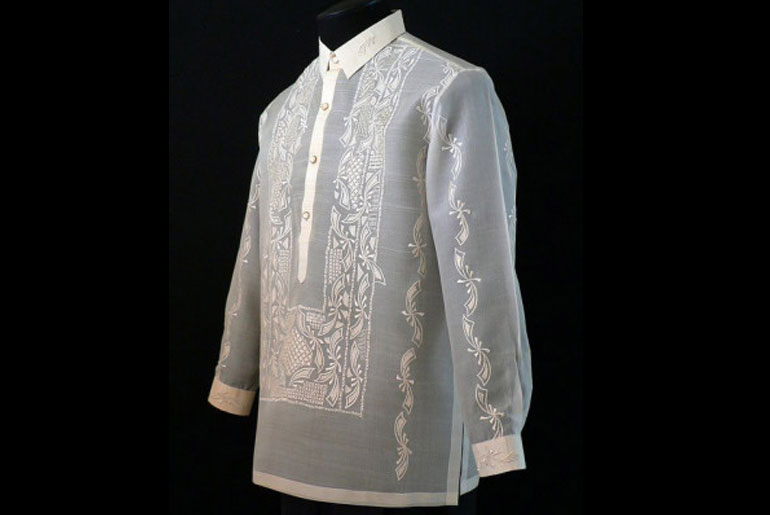
The Barong Tagalong
From Art of the Hawaiian Shirt by DeSoto Brown, Linda B. Arthur:
In the 20’s and 30’s Japanese tailors were well known in Honolulu. Musa-shiya the Shirtmaker became famous for advertisements created by George Mellen. These ads were directed towards the tourist so they could order on arrival, have it made quickly, and wear it for their entire stay.
The shirts made in both Western-style dress shirts and Japanese fabrics became a crucial element in the creation of the aloha shirt. Silk and cotton would have been first used in the very early shirts, as rayon, the first synthetic fiber, was not suitable until the late1940’s.
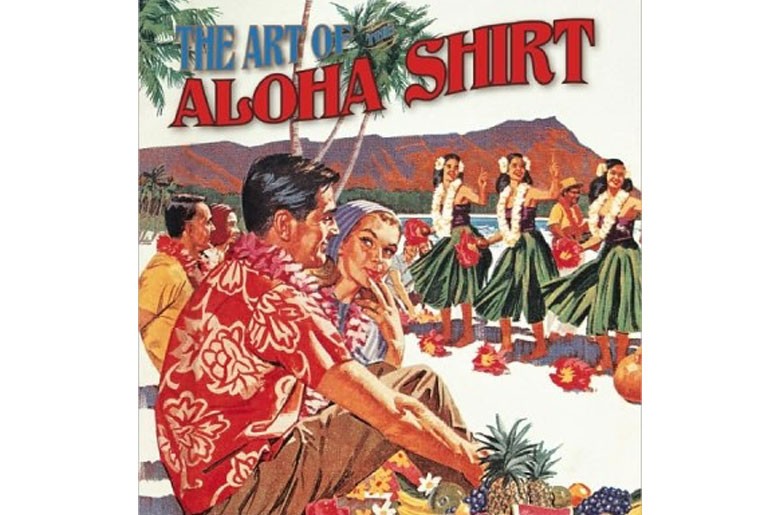
Art of the Aloha Shirt by DeSoto Brown and Linda B. Arthur
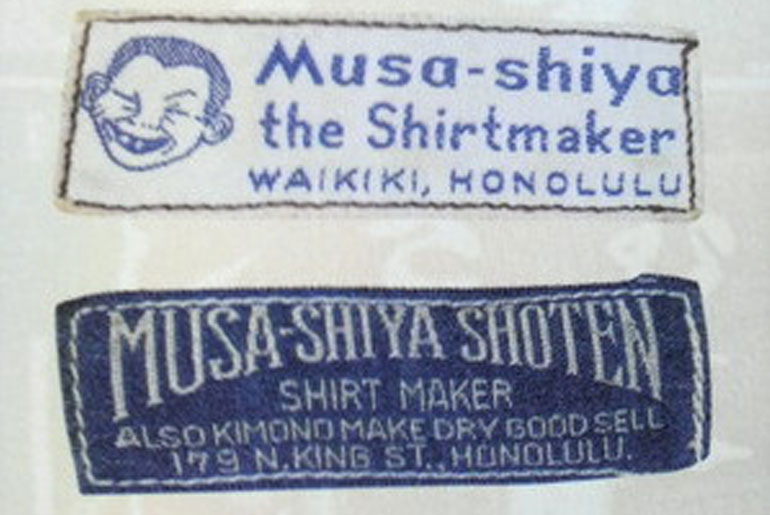
Early Musa-Shiya Shirt Labels
After WWII, G.I.s returned home with souvenirs from the South Pacific, Hawaiian shirts especially (though we can also blame them for popularization of the ukulele, the kudzu of musical instruments).
Once Hawaii became our fiftieth state in 1959 and mainlanders flew to take a look at our new toy, they also came home with suitcases full of drink parasols, stolen towels, and Hawaiian shirts.
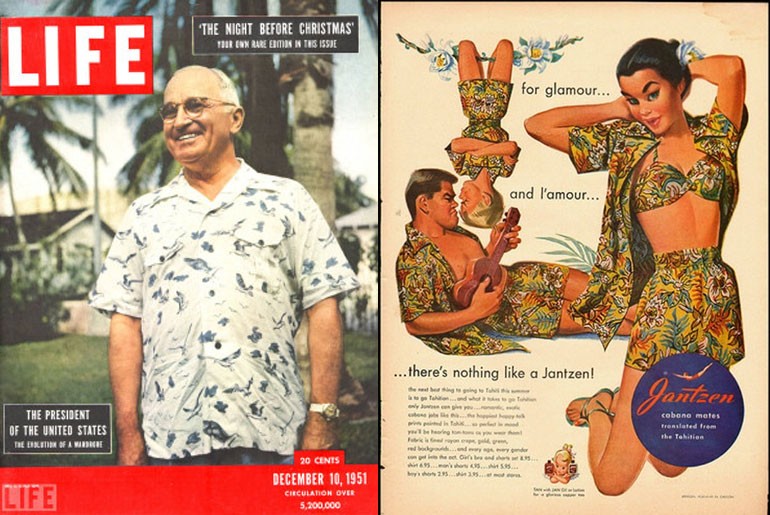
Harry Truman on Life Magazine 1951 and an early Jantzen ad
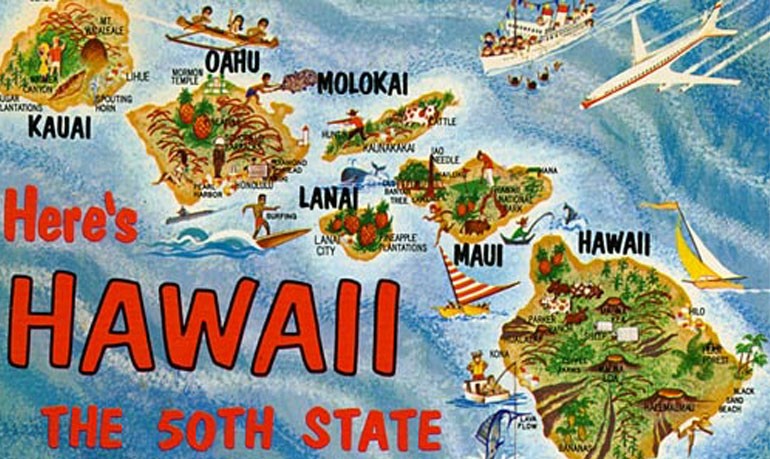
Hawaii Statehood Postcard
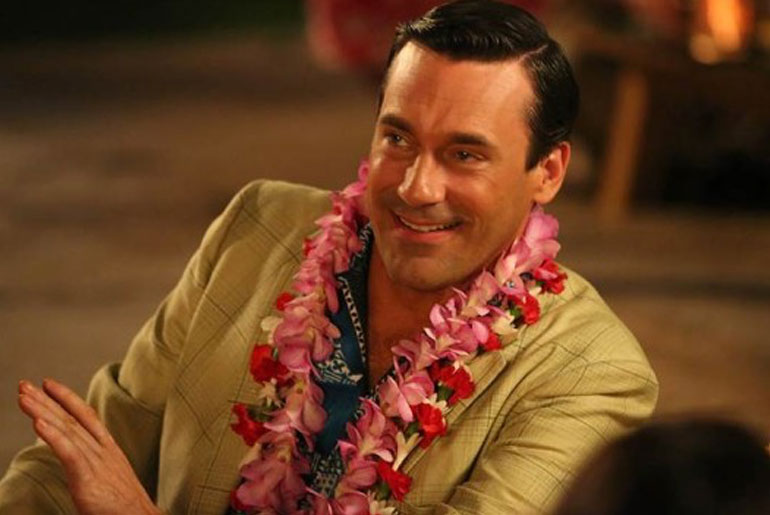
Don Draper proving Gray Flannel is for the mainland
This is the kitsch phase, the Hawaiian shirt as wearable snow globe. Again, from Brown and Arthur’s Art of the Hawaiian Shirt:
This period up to the middle to late 50’s was considered the Golden Age of aloha shirts. Rayon with smooth finish and Hawaiian prints became the pinnacle of aloha shirts.
Complicated eye popping patterns containing all aspects of Hawaiian culture and artifacts were included on the aloha shirts, often referred to as “chop suey” prints because of the mixture of content in the design. These were the shirts that collectors, in later years, would pay high prices to add to their collections.
Ain’t that the truth. Today, shirts from this era—especially select Japanese designs (sound familiar?)–can fetch hundreds to thousands of dollars. (My mom snagged a choice one for me at a Syracuse, NY thrift store for $2.99. I sold it, because I’m an idiot.)
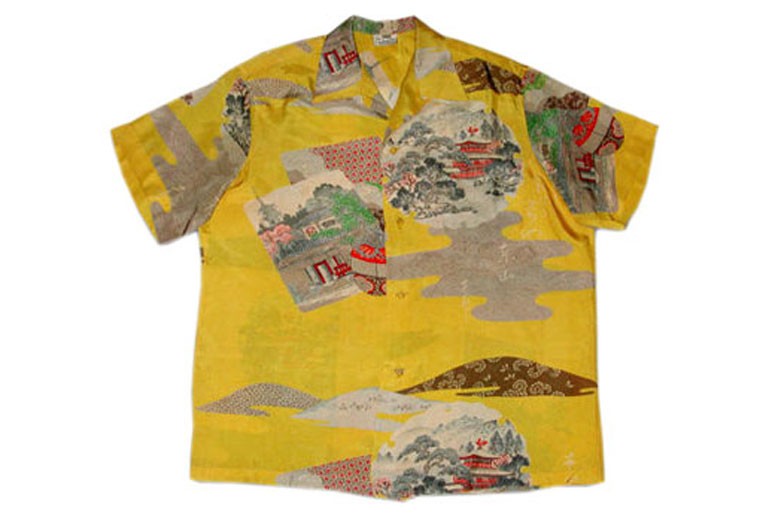
1950’s Hawaiian Shirt
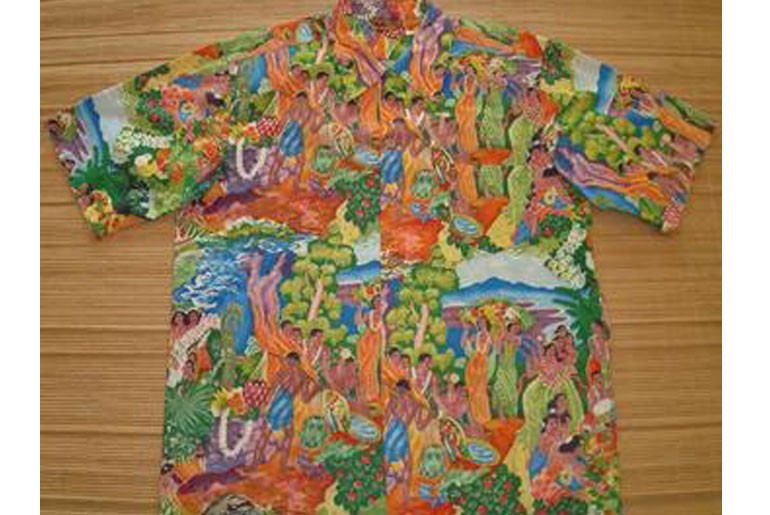
1950’s Eugene Savage Matson Menu Island Life Vintage Hawaiian Aloha Shirt – Made By Kamehameha
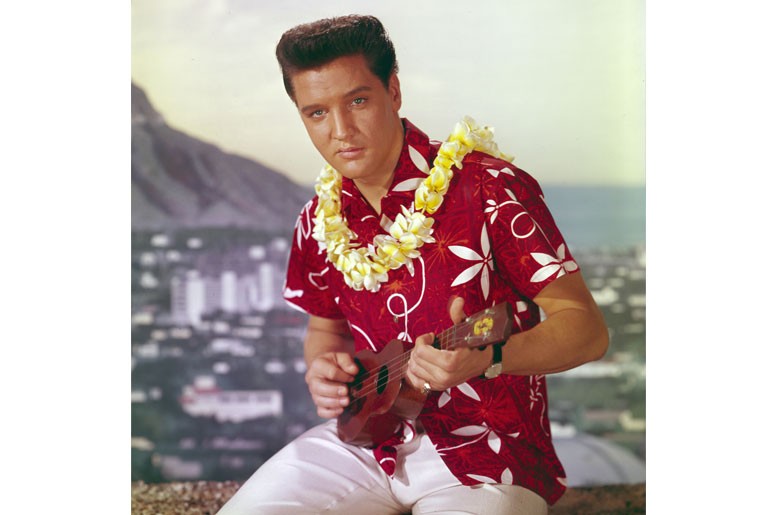
Elvis Presley in Blue Hawaii
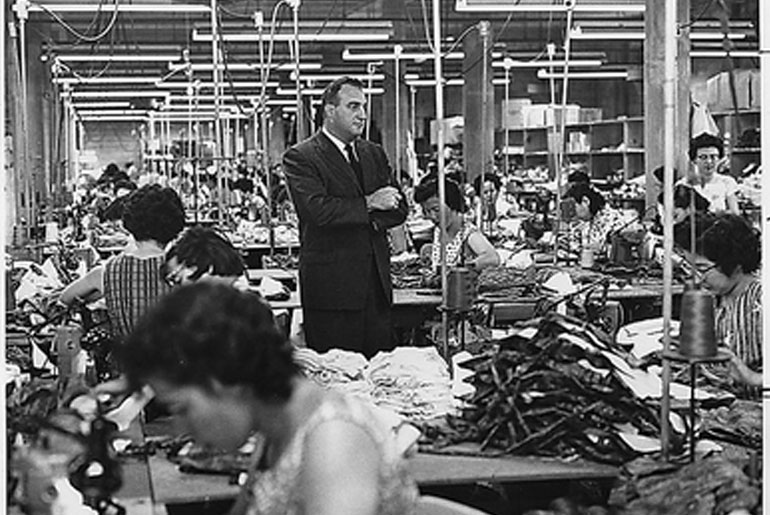
Shirtmaker Alfred Shaheen
There has always been a high and a low interpretation of the Hawaiian shirt, so while the black-socks-and-sandals crowd wore them poolside at the Royal Hawaiian (and at many the backyard luau), designers like Los Angeles’ Alfred Shaheen produced varieties luxe enough to grace the back of the King himself.
Throughout the 1960’s and 70’s, Hawaiian shirts always seemed to remain in style a little, if for no one else than the pioneers the vintage clothing market, those living in the warmest climes, and anyone who’s ever been to a Jimmy Buffett concert.
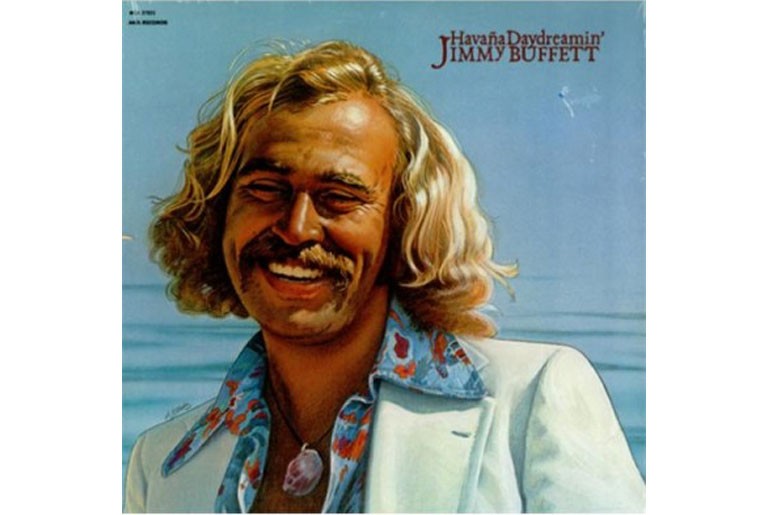
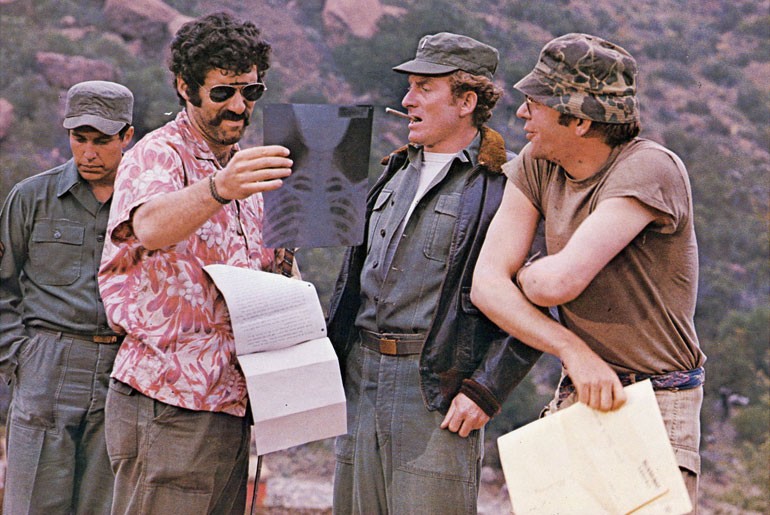
Eliott Gould as Hawkeye Pierce in MASH (1970)
With the 1980’s came a surf revival, with the Hawaiian-shirted Magnum P.I. (and his tiny shorts), not to mention Ocean Pacific gear at every mall on earth. That’s when I caught the bug (talk about a “Cruel Summer”). I thought I was channeling my inner Hawkeye Pierce, but I looked more like a cross between Screech and Nolte after a bender.
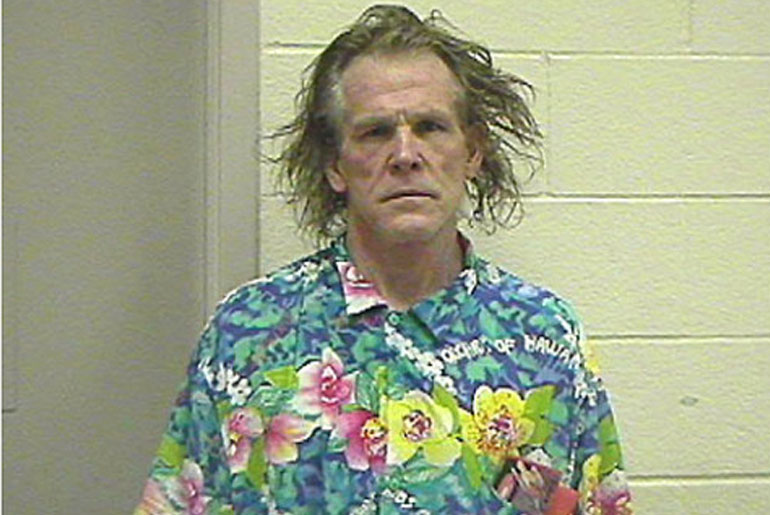
Nick Nolte – Aloha From Jail
Hawaiian Shirts Now
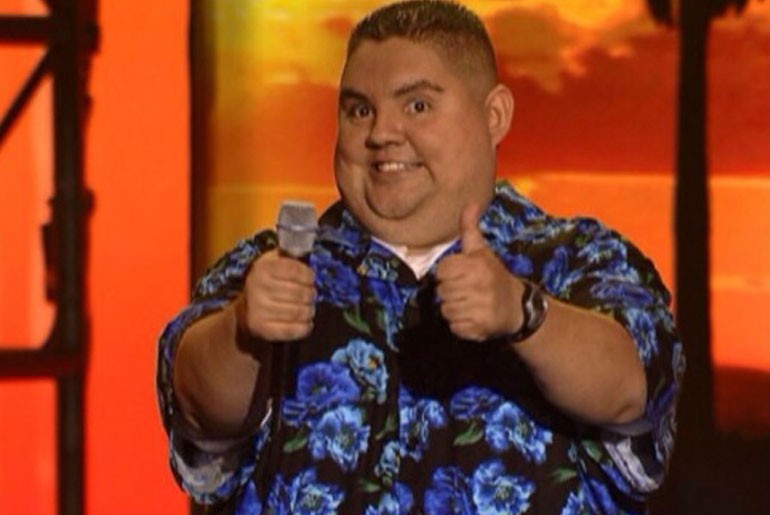
Gabriel “Fluffy” Iglesias
The Hawaiian shirt has been making a more aggressive comeback in the last year or so, sneaking into our world thanks to makers like the folks at Levi’s Vintage Clothing.
Of course, major department stores sell brightly printed short sleeve shirts every year, but those should likely be avoided, especially those made by one Mr. Tommy Bahama. He does not make Hawaiian shirts, but the short-sleeved, cigar and guitar printed equivalent of a PT Cruiser—undoubtedly Satan’s automobile. And there really is no need–lots of companies making beautiful reproductions of old Hawaiian shirt designs, as well as fresh takes that allow you to look unstuffy but not Fluffy.
Here are some worthy examples of the leading styles:
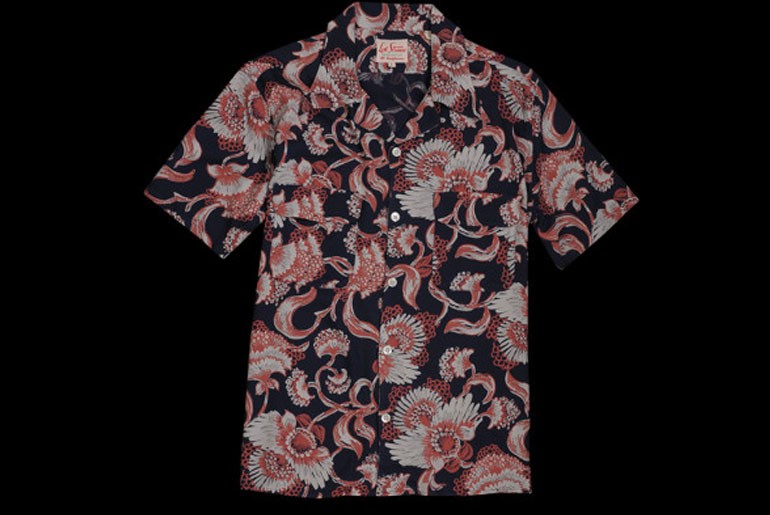
Levi’s Vintage Clothing – 1950s Hawaiian Shirt in Red Flowers
The most common type is the all-over print Hawaiian shirt, this beauty from our friends at Levi’s Vintage Clothing, and earns bonus points for mother of pearl buttons and a flap pocket. Available at Unionmade for $198.
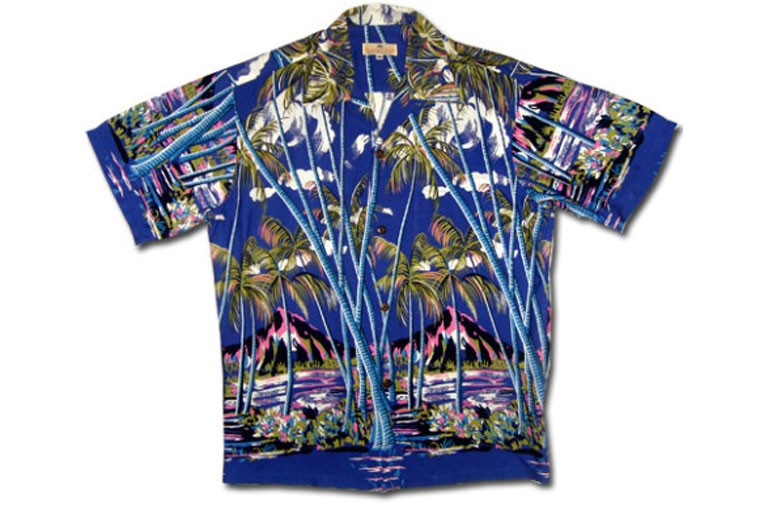
Hawaiian Palm by Pineapple Juice
Scenic Hawaiian shirts are known for their—wait for it—scenic prints. This beauty by Pineapple Juice snagged its 15 minutes of fame by starring alongside Montgomery Clift in From Here To Eternity. Available from Locals Only for $84.
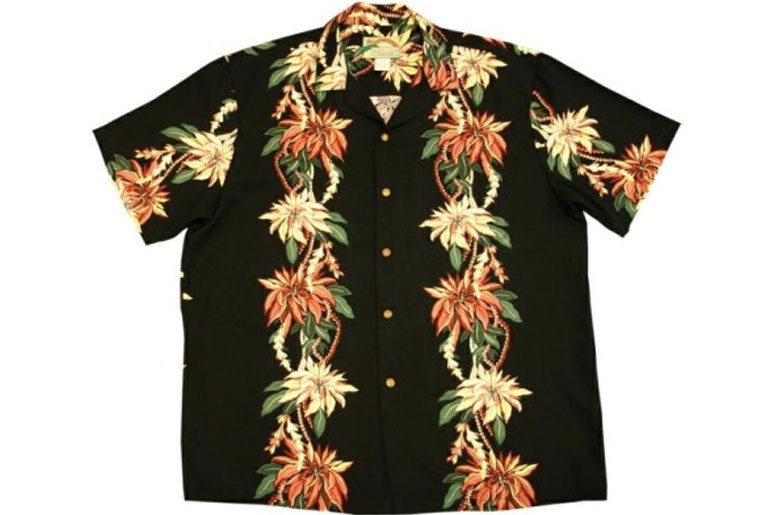
Poinsettia Panel by Paradise Found
Panel designs have their prints arranged vertically, beginning on either side of the buttons. Paradise Found makes this rayon number, and you can buy it from them as well for $58 (and, if you must, the shirts worn by mustachioed crime fighter Tom Selleck).
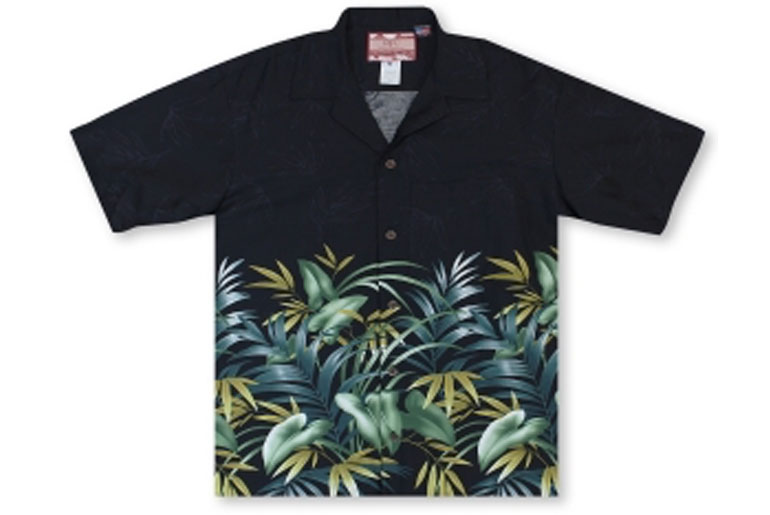
Jungle Flora by RJC Kalaheo
Border Hawaiian shirts feature various designs that go across the shirt from left to right (these can look like Panel designs if you happen to be looking at someone wearing one that is has passed out via tiki drinks). They also tend to appear at the bottom of the shirt, a mandate that it remain untucked. This is an understated cotton classic by RJC Kalaheo, and you can own it at the Aloha Shirt Shop for $42.
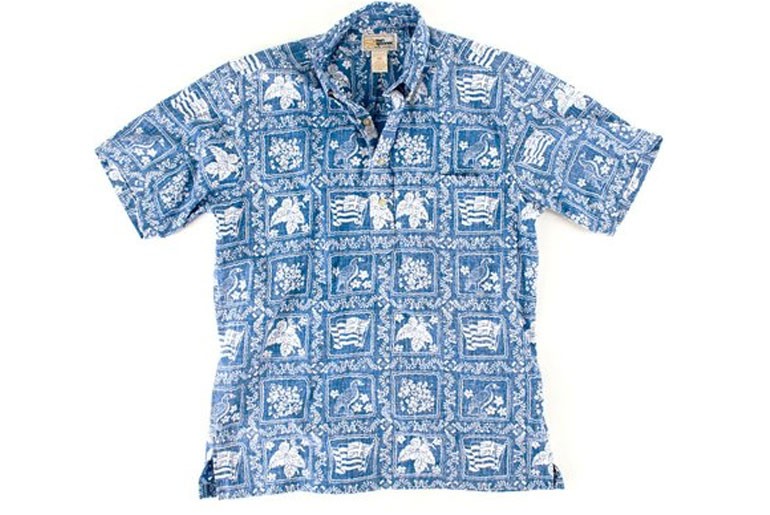
Lahaina Sailor Classic by Reyn Spooner
Matched print Hawaiian shirts have virtually invisible pockets and meet perfectly at the buttons, allowing for an “unbroken” image. Nobody does this better than Reyn Spooner, the Hawaiian shirt maker since 1956. They’ve long offered both pullover and button front styles in their signature Spooner Kloth, 55% combed cotton, 45% polyester, usually in “reverse print” fashion, using the back of the cloth to give classics like this Lahaina Sailor print a more subdued appeal.
Reyns have long been everyday office wear in the islands. To paraphrase the old joke about Chinese food in China, you know what they call Hawaiian shirts in Hawaii? Shirts.

